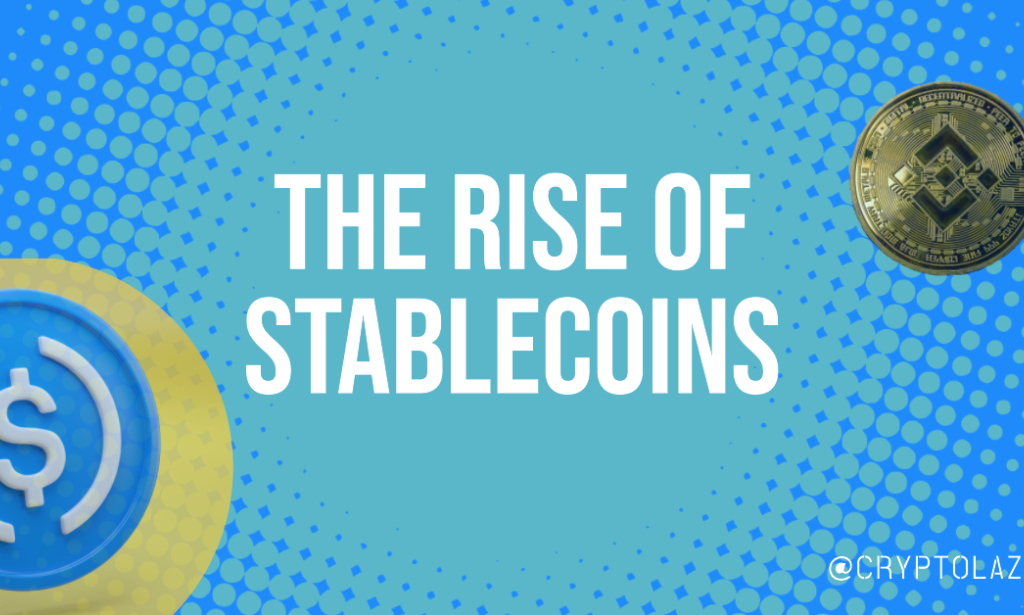WHAT ARE STABLECOINS?
Stablecoins are a type of cryptocurrency that aim to maintain a stable value relative to a reference asset, such as a fiat currency, a commodity, or another cryptocurrency. Stablecoins have emerged as a potential solution to the high volatility and price fluctuations of other cryptocurrencies, such as Bitcoin and Ethereum, which can limit their use as a medium of exchange, a store of value, or a unit of account.
Stablecoins can be classified into different categories based on their underlying mechanism for maintaining price stability. Some of the most common types of stablecoins are:
- Fiat-backed stablecoins: These are stablecoins that are backed by a reserve of fiat currency, such as the US dollar, the euro, or the yen. The reserve is held by a trusted third party, such as a bank, a custodian, or an auditor, who can verify that the stablecoin issuer has enough fiat currency to redeem the stablecoins at any time. Examples of fiat-backed stablecoins include Tether (USDT), USD Coin (USDC), and Binance USD (BUSD).
- Commodity-backed stablecoins: These are stablecoins that are backed by a reserve of commodities, such as gold, silver, or oil. The reserve is held by a trusted third party, who can verify that the stablecoin issuer has enough commodities to redeem the stablecoins at any time. Examples of commodity-backed stablecoins include Paxos Gold (PAXG), Digix Gold (DGX), and Tiberius Coin (TCX).
- Crypto-backed stablecoins: These are stablecoins that are backed by a reserve of other cryptocurrencies, such as Bitcoin or Ethereum. The reserve is held in smart contracts, which are self-executing agreements on the blockchain that can automatically adjust the supply and demand of the stablecoins according to market conditions. Examples of crypto-backed stablecoins include Dai (DAI), sUSD (SUSD), and BitUSD (BITUSD).
- Algorithmic stablecoins: These are stablecoins that are not backed by any reserve, but instead rely on an algorithm or a protocol to regulate the supply and demand of the stablecoins according to market conditions. The algorithm or protocol can use various methods, such as seigniorage shares, bonds, or feedback mechanisms, to adjust the supply and demand of the stablecoins in order to maintain price stability. Examples of algorithmic stablecoins include Basis Cash (BAC), Empty Set Dollar (ESD), and Frax (FRAX).
Stablecoins play an important role in the cryptocurrency ecosystem, as they can provide several benefits for users, such as:
- Reducing volatility and price risk: Stablecoins can reduce the volatility and price risk associated with other cryptocurrencies, which can make them more suitable for everyday transactions, such as payments, remittances, or e-commerce. Stablecoins can also provide a hedge against inflation or currency devaluation in some countries.
- Enhancing liquidity and interoperability: Stablecoins can enhance the liquidity and interoperability of the cryptocurrency market, as they can facilitate the exchange and transfer of value between different platforms, protocols, or networks. Stablecoins can also enable faster and cheaper cross-border transactions than traditional payment systems.
- Expanding financial inclusion and innovation: Stablecoins can expand financial inclusion and innovation, as they can provide access to digital money and financial services for people who are unbanked or underbanked in some regions. Stablecoins can also enable new business models and use cases for decentralized applications (DApps) that run on the blockchain.
However, stablecoins also face some challenges and risks, such as:
- Regulatory uncertainty and compliance: Stablecoins are subject to regulatory uncertainty and compliance issues in different jurisdictions, as they may fall under different legal frameworks and definitions depending on their design and function. Stablecoins may also have to comply with various rules and standards regarding anti-money laundering (AML), counter-terrorism financing (CTF), consumer protection, taxation, or data privacy.
- Technical security and scalability: Stablecoins are subject to technical security and scalability challenges, as they may be vulnerable to cyberattacks, hacking, or fraud that could compromise their functionality or integrity. Stablecoins may also face scalability issues due to network congestion, transaction fees, or speed limitations that could affect their performance or usability.
- Governance and transparency: Stablecoins are subject to governance and transparency issues, as they may depend on the trustworthiness and accountability of their issuers, custodians, auditors, or validators who are responsible for maintaining their stability and operability. Stablecoins may also lack sufficient transparency or disclosure regarding their reserves, audits, or algorithms that could affect their credibility or reliability.
In conclusion, stablecoins are a promising innovation that can offer many benefits for users and developers in the cryptocurrency space. However, they also pose some challenges and risks that need to be addressed by regulators, industry players, and researchers.
As the stablecoin market continues to grow and evolve, it is important to monitor its developments and impacts on the broader financial system and society.




You must be logged in to post a comment.